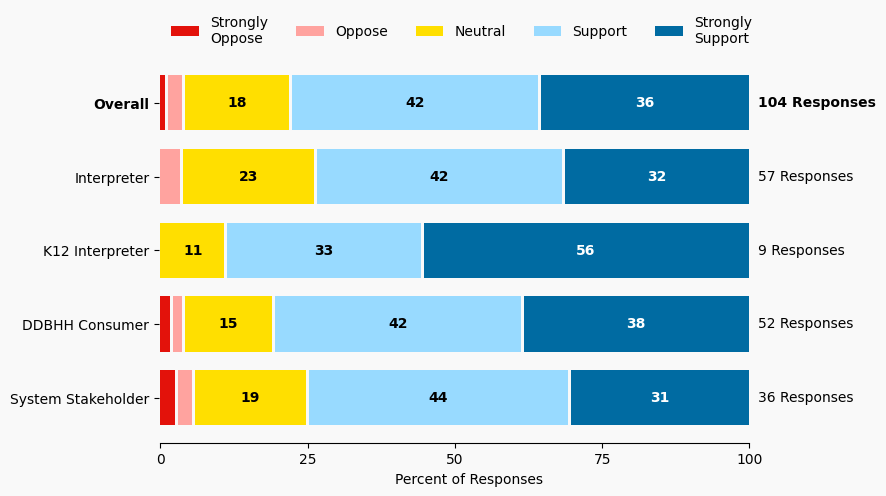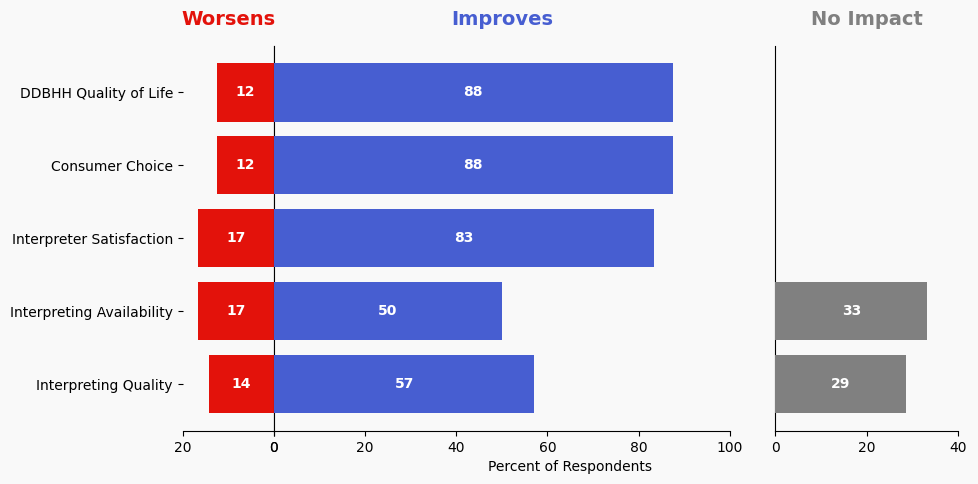74 Advocate for Legislative Limits and Standards for K12 Interpreting Services
Issue: K12 educational interpreter standards are not closely regulated; DDBHH students suffer when placed in mainstream settings with no interpreter or an unqualified interpreter. Current job requirements, oversight, compensation and other crucial areas for ensuring highly qualified and valued interpreters for DDBHH youth are insufficient. Educational interpreters have great concerns and desire for more standards and support.
Proposed Solution: Commission, MDE, PELSB and a coalition work together to organize and promote a legislative initiative to advocate for limits and standards for K12 interpreting services – and to hold school districts accountable to abide by these standards. Considerations for inclusion in legislation: level of language proficiency, explicit number of classroom working hours, inclusion of interpreter in IEP team and setting competitive compensation packages.
Expected outcome: Higher standards and compensation for educational interpreters will entice more interpreters to work in K12 education. Better outcomes for DDBHH students in mainstream K12 education.
Who is impacted: Educational interpreters, DDBHH students
Timeline: 6 months
Note: While legislation may be successful, including a reporting and follow up aspect to the legislation will be critical.

Summary of Support Image Description
The stacked bar charts show how respondents rated their level of support and the total number of responses. The percentage for the five support levels is shown from left to right: Strongly Oppose (Dark Red), Oppose (Light Red), Neutral (Yellow), Support (Light Blue), and Strongly Support (Dark Blue).
Respondents may identify with multiple subgroups. The overall level of support is:
Overall
Strongly Oppose: 1%
Oppose: 3%
Neutral: 18%
Support: 42%
Strongly Support: 36%
Click to see the detailed image description for each subgroup.
Interpreter
Strongly Oppose: 0%
Oppose: 4%
Neutral: 23%
Support: 42%
Strongly Support: 32%
K12 Interpreter
Strongly Oppose: 0%
Oppose: 0%
Neutral: 11%
Support: 33%
Strongly Support: 56%
DDBHH Consumer
Strongly Oppose: 2%
Oppose: 2%
Neutral: 15%
Support: 42%
Strongly Support: 38%
System Stakeholder
Strongly Oppose: 3%
Oppose: 3%
Neutral: 19%
Support: 44%
Strongly Support: 31%
Overview of Respondents Opting for In-Depth Solution Analysis
After indicating their support level, 2% of the 104 respondents opted in to further assess whether the solution would worsen or improve on five metrics. Of the opt-in reviewers (3 respondents), 33% supported the solution, 66% were neutral on the solution, and 0% opposed the solution.
The remaining 101 respondents did not opt in to further assess the solution. Of these people, 79% support the solution, 16% were neutral on the solution, and 3% opposed the solution.
Reviewer Evaluation of Solution Effectiveness

Solution Effectiveness Image Description
The stacked bar charts show how respondents assessed the effectiveness of this solution based on five metrics. For each metric, the percentage of respondents is shown from left to right: Worsens (Red), Improves (Blue), No Impact (Gray).
DDBHH Quality of Life
Makes It Worse 12%
Makes It Better 87%
No Impact 0%
Interpreter Satisfaction
Makes It Worse 16%
Makes It Better 83%
No Impact 0%
Consumer Choice
Makes It Worse 12%
Makes It Better 87%
No Impact 0%
Interpreting Availability
Makes It Worse 16%
Makes It Better 50%
No Impact 33%
Interpreting Quality
Makes It Worse 14%
Makes It Better 57%
No Impact 28%
Reviewer Feedback and Insights
Interpreter
Comments from Interpreters emphasize the importance of including CDIs in educational interpreting, not just hearing interpreters. Another comment highlights that current laws regarding K-12 interpreting are not being enforced or monitored.
Deaf, DeafBlind, Hard of Hearing
One comment from DDBHH Consumers questions the focus on K-12, noting that Minnesota is a “birth to age 22” state, with interpreters beginning when needed. Another comment raises concerns about the Minnesota Department of Education’s lack of understanding of certification disparities between EIPA and NIC, emphasizing that schools treat both certifications as equal despite differences. One comment suggests that addressing interpreter concerns could be a focus for unions, particularly through a dedicated subgroup for K-12 interpreters.
System Stakeholder
No comments were submitted.
PREVIOUS SOLUTION
73 Interpreter Training Programs (ITPs) Include K12 Education Components in Curricula
Issue: There appears to be inconsistent curricula about K12 educational interpreting across Minnesota’s ITPs. K12 educational interpreters wish for more formal education about EIPA and IEPs specifically.
NEXT SOLUTION
75 Advocate for Health Care Systems to Develop Welcome Packets
Issue: Consumers need more information about resources in health care systems
Leave a Reply